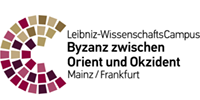Captivity, Conditional Freedom, and Bondage in a Late Antique Ecclesiastical Landscape: Discourse and Practice in Sixth- and Seventh-Century Merovingian Francia
This project studies the freeing and manumitting of captives and slaves by the Merovingian Church of the sixth and seventh centuries, as well as the resulting resilient relationships of patronage and dependency between the freeing ecclesiastical institutions and the liberated. It aims to understand the social and devotional realities of ecclesiastical redemptio (the freeing of captives, often through payment), manumissio (the release from a legal state of unfreedom), and bondage, to insert them in the context of the larger expansion and transformation of the Merovingian Church in the sixth and seventh centuries.
The Merovingian period was one of great political violence, systemic raiding, and social insecurity: a situation that led countless persons into captivity, and slavery both voluntary and involuntary. These unfree could often find themselves in the patronage and service of a Church much less opposed to their subservient existence than early Christian texts would lead us to believe. The project analyses the systems that led to the freeing and binding of these captives to ecclesiastical institutions, through a study of both the practices and discourses that upheld it. For what concerns the practices, these can be of an indirect type, such as extensive systems of gift-giving between secular individuals and ecclesiastic actors and institutions, reutilised for freeing and manumitting. They can also be more direct, such as the manumission of a slave to an ecclesiastical institution or specific saint’s cult by their master. These acts and situations are, in contemporary sources, surrounded by a layer of theological and devotional language; this must equally be studied to access the discourses and mentalities of the ecclesiastical milieu, and to better understand the reasons for the participation of other societal milieus.
The project focuses on texts allowing a glimpse into the described practices and internal discourses of the ecclesiastical milieu of sixth- and seventh-century Francia. The core corpus of sources is comprised of a selection of hagiographies; texts of canon law written in Gaul, or demonstrably relevant for the Gallic context; and liturgical texts, with a particular eye for homiletical literature. Other types of sources containing scenes, procedures, or discourses connected to slavery, freedom, and manumission may be added. These are charters (with particular attention to the arengae), monastic rules, or letter-exchanges. This is also where a comparison with Byzantine, and more in general Eastern Christian sources will be of great advantage to better understand Western developments – particularly where some heuristic gaps may need to be overcome in the Merovingian material – and to compare them in a larger context.












